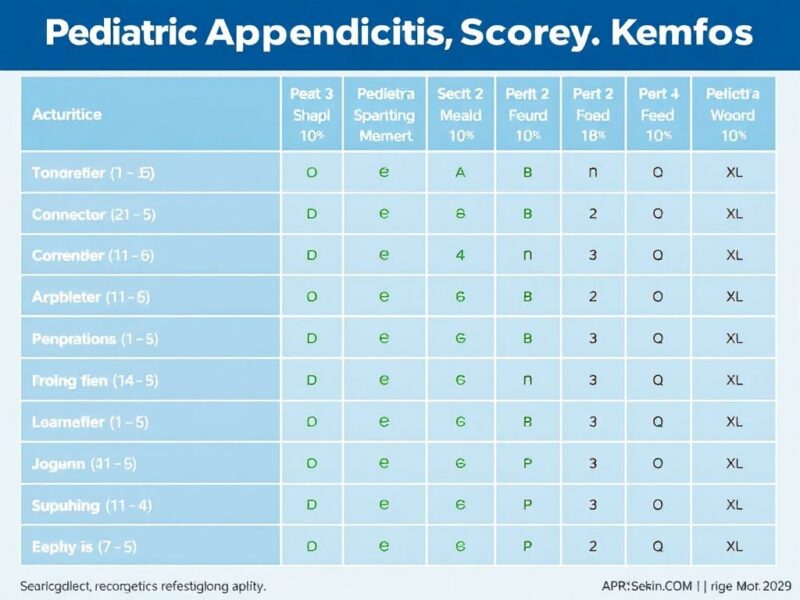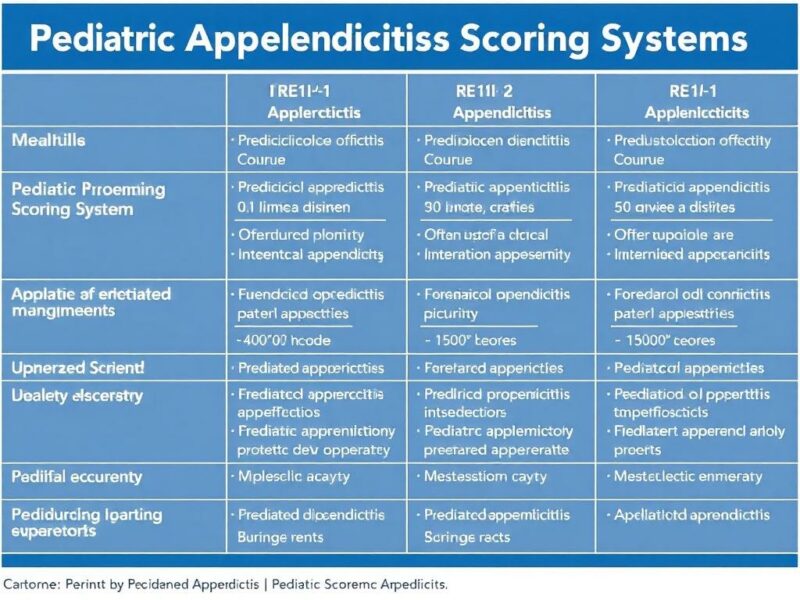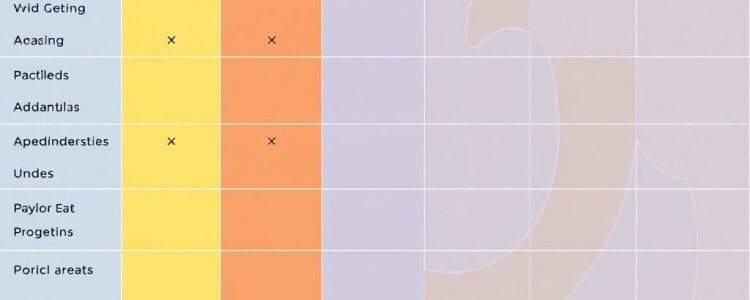Appendicitis in children is a common but tricky medical condition. When a child’s appendix becomes inflamed, timely diagnosis and treatment are crucial to avoid complications like rupture or infection. However, diagnosing appendicitis in pediatric patients is often challenging due to overlapping symptoms with other common childhood illnesses. This is where pediatric appendicitis scoring systems come into play. These tools help healthcare providers assess the likelihood of appendicitis quickly and accurately, guiding decisions about further testing or surgery.
What Is Pediatric Appendicitis and Why Is Early Diagnosis Important?
Appendicitis is inflammation of the appendix, a small, finger-shaped pouch attached to the large intestine. It typically causes abdominal pain, fever, and nausea. In kids, symptoms can be subtle or atypical, making clinical judgment alone insufficient. Delayed diagnosis often results in a ruptured appendix, increasing the risk of serious infections and prolonged hospital stays. Thus, early, accurate diagnosis is vital.
Challenges in Diagnosing Appendicitis in Children
Unlike adults, children might not clearly describe their symptoms. Their pain location may change, and signs such as fever or elevated white blood cells can be nonspecific. Younger children especially might have difficulty localizing pain or expressing nausea and loss of appetite. Because of this, healthcare providers rely on tools that combine clinical features into a scoring system to improve diagnostic accuracy.
What Are Pediatric Appendicitis Scoring Systems?
Pediatric appendicitis scoring systems are structured clinical tools that use various symptoms, signs, and laboratory findings to produce a numerical score indicating the likelihood of appendicitis. These scores assist doctors in deciding whether to observe, order imaging tests like ultrasound or CT scans, or proceed with surgery.
Commonly Used Pediatric Appendicitis Scoring Systems
Several scoring systems have been developed and validated for children. Each uses a different set of criteria but shares the goal of simplifying decision-making.
| Scoring System | Key Features | Score Range | Purpose |
|---|---|---|---|
| Alvarado Score (Modified for Pediatrics) | Symptoms (migration of pain, anorexia, nausea), signs (tenderness, rebound), lab (leukocytosis) | 0-10 | Estimate likelihood of appendicitis; guide imaging and surgery decisions |
| Pediatric Appendicitis Score (PAS) | Symptoms (anorexia, migration pain, vomiting), signs (fever, tenderness), labs (leukocytosis) | 0-10 | High accuracy for pediatric patients; stratifies risk into low, moderate, or high |
| Appendicitis Inflammatory Response (AIR) Score | Symptoms, signs, lab results including CRP level | 0-12 | Improves diagnosis accuracy, especially in borderline cases |
Examining the Pediatric Appendicitis Score (PAS) in Detail
Among these, the Pediatric Appendicitis Score is widely used because it was specifically created for children. PAS assigns points to eight clinical factors, with a maximum score of 10. Here’s a breakdown:
- Migration of pain to the right lower quadrant – 1 point
- Anorexia (loss of appetite) – 1 point
- Nausea or vomiting – 1 point
- Tenderness in the right lower quadrant – 2 points
- Cough/percussion/hopping tenderness – 2 points
- Elevated temperature (fever) – 1 point
- Leukocytosis (elevated white blood cell count) – 1 point
- Neutrophilia (high proportion of neutrophils) – 1 point
A score of 7 or above indicates a high probability of appendicitis, warranting swift surgical consultation. Scores between 4 and 6 suggest intermediate risk, often indicating need for further imaging and observation, while scores below 4 usually point to low risk.
How Are These Scoring Systems Used in Practice?

While no scoring system offers a 100% definitive diagnosis, they serve as invaluable guides. The typical approach is:
- Patient history and physical exam to identify symptoms and signs.
- Calculation of a pediatric appendicitis score like PAS.
- Based on the score, the clinician decides whether to observe, order imaging tests, or refer for surgery.
These systems reduce unnecessary imaging and negative appendectomies, meaning fewer children undergo unwarranted surgery. They also help in settings where imaging is limited.
Role of Laboratory and Imaging Tests
Many scoring systems incorporate lab data such as white blood cell counts and C-reactive protein (CRP). Elevated inflammatory markers increase suspicion. When scores are equivocal, ultrasound is often the next step. Ultrasound is radiation-free and effective but operator-dependent. In some cases, a CT scan is done for clarity but involves radiation exposure—a concern in children.
Benefits of Using Pediatric Appendicitis Scoring Systems
Using these scoring tools offers several advantages:
- Standardization: Provides consistent criteria across clinicians and hospitals.
- Improved Diagnostic Accuracy: Enhances ability to identify true cases of appendicitis.
- Reduction in Unnecessary Tests: Helps avoid unnecessary CT scans and hospitalizations.
- Timely Surgical Intervention: Enables faster referral to surgery when needed, reducing risk of rupture.
- Resource Optimization: Especially valuable in resource-limited settings.
Limitations and Considerations
While helpful, scoring systems have limitations:
- Variability: Some scoring components are subjective, like pain description.
- Age Differences: Young children may still present atypically.
- Not a Replacement for Clinical Judgment: Scores assist but do not replace experienced doctor’s decision-making.
- Overlap of Conditions: Other abdominal illnesses may mimic appendicitis, causing false positives.
Therefore, clinical context remains paramount.
Comparing Pediatric Appendicitis Scoring Systems: Which One to Use?

Different hospitals and regions may prefer one scoring system over another based on ease of use and validation data. Here’s how three major scoring systems compare regarding diagnostic metrics:
| Scoring System | Sensitivity (%) | Specificity (%) | Ease of Use | Applicability to Pediatrics |
|---|---|---|---|---|
| Alvarado Score | 85 | 60 | Moderate | Moderate |
| Pediatric Appendicitis Score (PAS) | 92 | 86 | High | Designed specifically for children |
| Appendicitis Inflammatory Response (AIR) Score | 88 | 80 | Moderate | Good for borderline cases |
Given these numbers, PAS tends to be the first choice for pediatric patients because it balances sensitivity and specificity well and is easy to apply.
Future Directions in Pediatric Appendicitis Scoring
Medical research continues to refine and validate appendicitis scoring systems. Newer models are incorporating advanced laboratory markers and even machine learning to further improve diagnosis accuracy. Efforts are ongoing to improve reminder tools for clinicians and to develop smartphone apps that calculate scores instantaneously.
Moreover, the integration of scoring systems with imaging and lab tests into standardized clinical pathways is improving healthcare delivery. Telemedicine consultations using scoring systems are also on the rise, expanding access to expert assessment in remote areas.
Using Technology to Enhance Scoring Systems
Innovations like artificial intelligence (AI) are being studied to interpret data from electronic health records combined with scoring systems to highlight high-risk cases quickly. This not only expedites care but also helps identify children at low risk who can safely avoid invasive procedures.
Education and Training
To maximize the effectiveness of pediatric appendicitis scoring systems, ongoing education for healthcare providers is essential. Training improves accurate data collection and application of scores, minimizing errors and improving patient outcomes.
Summary Table: Pediatric Appendicitis Scoring System Checklist
| Criteria | Notes | Point Value (PAS) |
|---|---|---|
| Migration of pain | Shifting to right lower quadrant | 1 |
| Anorexia | Loss of appetite | 1 |
| Nausea/vomiting | Feeling sick or vomiting | 1 |
| Tenderness RLQ | Pain on palpation in right lower quadrant | 2 |
| Cough/percussion/hopping tenderness | Pain triggered by cough or movement | 2 |
| Elevated temperature | Fever above 38°C | 1 |
| Leukocytosis | WBC count above 10,000/mm³ | 1 |
| Neutrophilia | High proportion of neutrophils | 1 |
Practical Tips for Parents and Caregivers

If your child complains of abdominal pain, consider the following:
- Observe for shifting pain towards the right lower abdomen.
- Watch for other symptoms like loss of appetite, nausea, or fever.
- Seek medical attention promptly if symptoms worsen or persist beyond 24 hours.
- Ask your healthcare provider if they use a pediatric appendicitis scoring system to guide care.
- Remember that early diagnosis and treatment prevent complications.
Conclusion
Pediatric appendicitis scoring systems are invaluable tools that simplify the complex challenge of diagnosing appendicitis in children. By combining clinical signs, symptoms, and laboratory results into easy-to-interpret scores, these systems aid in more accurate, timely decisions. The Pediatric Appendicitis Score, designed specifically for children, strikes an excellent balance between accuracy and usability. While not a substitute for clinical judgment, these scoring systems reduce unnecessary imaging and surgeries, leading to safer, more efficient care. Continued research, education, and technological advancements promise to make these tools even more powerful in the near future, ultimately saving young lives and easing the anxiety families face when appendicitis strikes.



